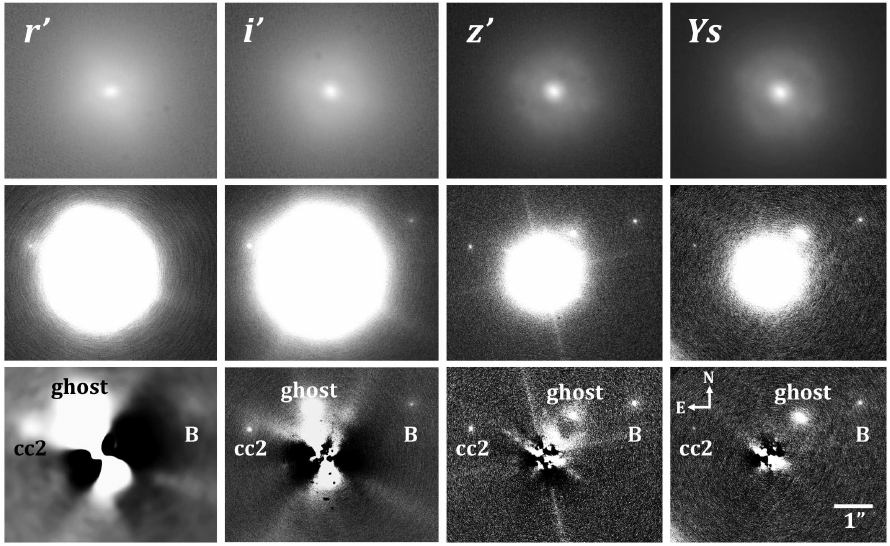
Top row: unsaturated dataset showing the PSF. Middle row: reduced, saturated dataset
before any halo subtraction. Bottom row: primary’s halo removed by subtracting a rota-
tionally symmetric PSF.
Abstract:
We used the Magellan adaptive optics (MagAO) system and its VisAO CCD camera to image the young low mass brown dwarf companion CT Chamaeleontis B for the first time at visible wavelengths. We detect it at r’, i’, z’, and Ys. With our new photometry and Teff~2500 K derived from the shape of its K-band spectrum, we find that CT Cha B has Av = 3.4+/-1.1 mag, and a mass of 14-24 Mj according to the DUSTY evolutionary tracks and its 1-5 Myr age. The overluminosity of our r’ detection indicates that the companion has significant Halpha emission and a mass accretion rate ~6*10^-10 Msun/yr, similar to some substellar companions. Proper motion analysis shows that another point source within 2″ of CT Cha A is not physical. This paper demonstrates how visible wavelength AO photometry (r’, i’, z’, Ys) allows for a better estimate of extinction, luminosity, and mass accretion rate of young substellar companions.
Wu, Y.-L., et al. “New Extinction and Mass Estimates from Optical Photometry of the Very Low Mass Brown Dwarf Companion CT Chamaeleontis B with the Magellan AO System”
ApJ, 801, 4, 2015 arxiv preprint